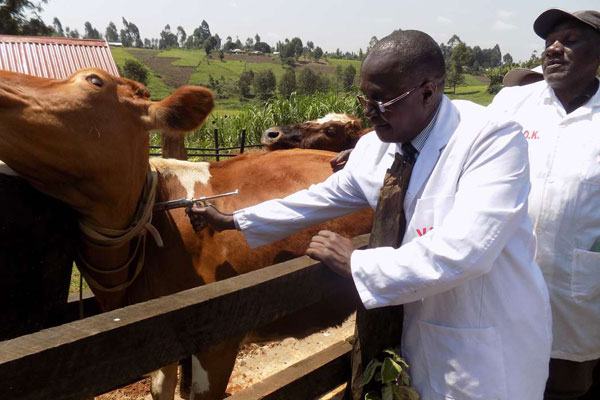Farmers will now control the East Coast Fever disease easily after researchers at the Kenya Agricultural and Livestock Research Organization developed a vaccine to control the deadly disease with an 80 to 100 per cent mortality rate.
The research organization will release more than 500,000 doses of the vaccine by December 2018 with each dose retailing at Sh200. Farmers will be able to purchase the vaccine at certified agro-vets across the country.
Farmers have been relying on a vaccine which was last developed in 1995 to control the disease which kills at least 100,000 animals in Kenya and 28m in the East African region annually.
“The disease costs Sh25bn in economic losses in the whole African continent annually and that’s why we have come up with this vaccine to help small scale farmers get return on investment,” said Moses Alu, a research scientist at KALRO.
ECF is caused by a parasite adapted to the African buffalo and is transmitted from one animal to another by the brown ear ticks found attached to the ears and the tip of the tail.
It is characterized by initial signs of swelling of regions just below the ear.
Related content
How to deal with mange disease in cattle
Government agency to train farmers on how to improve their cattle breeds for free
Rift farmer creates empire with low cost cattle feed

Vaccination of cows in the past. Courtesy
The common symptoms of the disease include a soft cough, fever, loss of appetite, difficulty in breathing, pale eyes and diarrhea. If not properly managed, the infected cow dies after four months.
At the moment, farmers are controlling the disease by spraying/dipping of cattle to control ticks.
In some instances, farmers can remove ticks manually from the cows but this method is applied when the numbers of cows are few and the rate of tick infestation is between 20 to 30 per cent.
According to the Kenya National Bureau of Statistics animal census of 2009, the country has 17,417,824 heads of cattle in the livestock sector industry that contributes 12 per cent to Kenya’s GDP and employs about 50 per cent of the total agricultural workforce.
More than 10m people majorly in the arid and semi-arid areas of Kenya rely on cattle to sustain their livelihoods.
















Comments powered by CComment